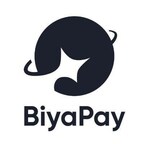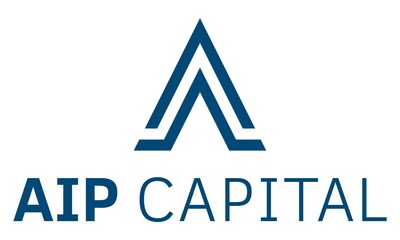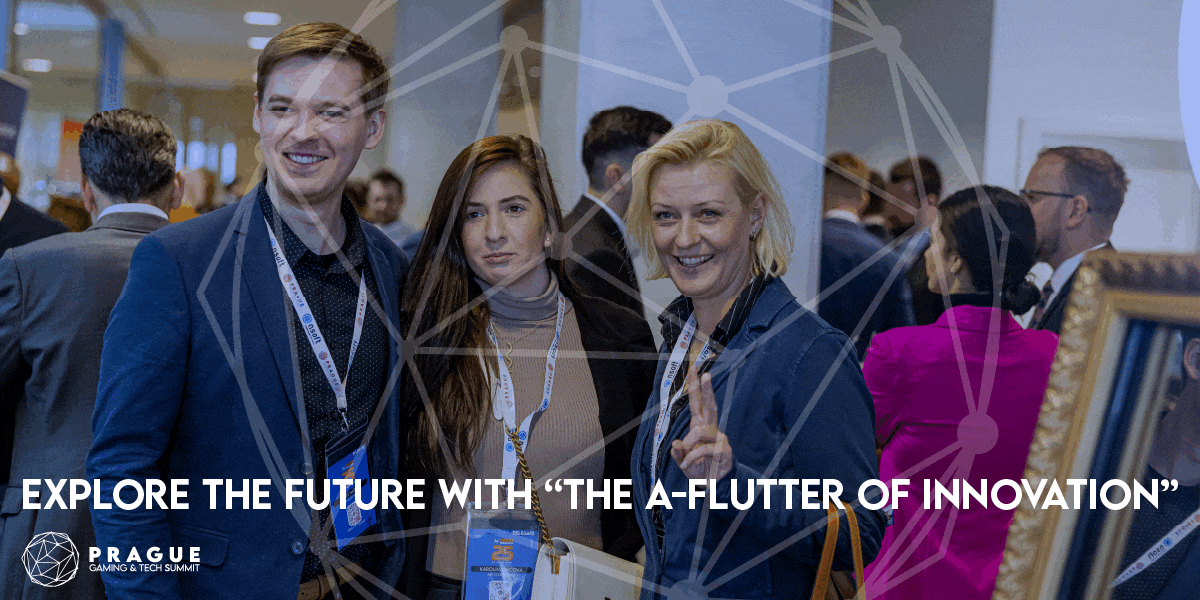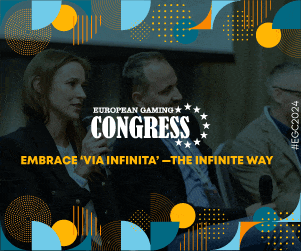Fintech PR
Why Are There No New Users in the Crypto Market? How Multi-Asset Trading Wallet BiyaPay Is Finding New Solutions Amidst Fierce Competition and User Confusion ?

SINGAPORE, March 31, 2025 /PRNewswire/ —
Introduction
In recent years, the cryptocurrency market has undergone a dramatic shift from euphoria to calm. At one point, Bitcoin and Ethereum prices hit new highs, and concepts like NFTs and the Metaverse rapidly gained traction, attracting a flood of new users. However, as the market cooled down, the growth of new users slowed significantly, even showing signs of stagnation. This phenomenon has caused concern within the industry: why is the crypto market struggling to attract new participants? Despite continuous technological innovation and an abundance of new projects, public interest has not kept pace. The challenges faced by the crypto market are rooted in increasing competition and a more complex ecosystem, which has left new users confused. This article will explore why the crypto market is experiencing a lack of significant new user growth and discuss how, in the midst of intense competition and user confusion, companies like BiyaPay, a leading multi-asset trading wallet, are finding new ways to drive growth in the crypto industry.
Market Situation Analysis
The competition in the crypto market has intensified, and the ecosystem has become increasingly saturated. From public chains to sidechains, to Layer 2 networks and various decentralized applications (dApps), the number of projects has exploded. According to statistics, over 350 active blockchain networks exist worldwide, and the number of new tokens issued each day reaches tens of thousands. The fragmentation of the market has intensified, and users are now faced with an overwhelming number of choices. However, despite the continuous increase in projects, user growth has not followed suit. Indicators like Total Value Locked (TVL) show that the current cycle has not surpassed previous market highs. The decline in search interest for the term “crypto” on Google Trends also reflects the cyclical decrease in public interest. For beginners, entering the crypto world is far from simple: hundreds of blockchains, wallets, and various protocols and applications make the decision process overwhelming, and the sheer number of options raises the cognitive and usability barriers.
The stagnation in new user growth is driven by multiple factors. First, the user experience of crypto products is significantly more complex than that of traditional internet applications. New users must not only install digital wallets, back up recovery phrases, purchase digital currencies, and pay miner fees but also switch between different blockchain networks, which is particularly daunting for those with no prior exposure to crypto technology. Second, market fragmentation is severe. The ecosystems of various public chains are isolated, making asset interoperability a challenge. This means users need to switch between platforms, for example, dApps on Ethereum have high transaction fees, and users seeking cheaper alternatives often have to learn new wallets and operational logic. The lack of unified standards and interoperability creates friction in user experiences. Lastly, information overload exacerbates user confusion. With thousands of token projects, new users often struggle to distinguish valuable projects from fraudulent ones. The complexity of the experience and the overload of information discourage potential users from entering the market.
Beyond the complexity of the user experience, external factors also contribute to the hesitation of new users entering the crypto market. One significant challenge is regulatory uncertainty. Different countries have vastly differing attitudes toward cryptocurrencies, and their regulations are subject to frequent changes. Some countries have welcomed crypto innovation only to suddenly impose strict regulations, while others have yet to define clear regulations. This uncertainty makes it difficult for crypto companies to operate compliantly, and users feel uneasy about investing in crypto due to the risk of sudden regulatory crackdowns. Another challenge is the frequent occurrence of security incidents, which has damaged the public image of the industry. Events such as exchange bankruptcies, project founders running off with funds, and hacking incidents have shaken user confidence in the safety of crypto platforms. The media’s coverage of crypto scams, money laundering, and other criminal activities has further exacerbated the industry’s reputation crisis. These events make ordinary users wary of entering the crypto space, as they fear losing their funds or getting caught up in illegal activities. Trust issues have become the most significant psychological barrier preventing new users from entering the market.
Core Barriers to User Growth
The target audience for the crypto industry is not homogeneous but highly diversified. Developers, ordinary users, investors, and institutions all have different needs, contributing to the fragmentation of the market. For example, public chain projects primarily target developers, as only developers can build applications that attract end users and grow the ecosystem. Therefore, public chains need to focus on “developer marketing” and technical documentation to encourage developers to adopt their chains. However, these efforts may not directly translate into growth for the average user base. For dApp applications, which should ideally focus on end users, many instead focus on attracting token holders and speculative funds. Sometimes token holders are not actual users of the product but engage in speculative arbitrage, which does not contribute to real user growth. Venture capitalists and institutional investors are primarily focused on return on investment (ROI), and they invest in projects with the expectation that token prices will appreciate. This often leads projects to prioritize token price management and exchange partnerships over improving the product’s appeal to everyday users. Meanwhile, retail speculators are more concerned with short-term price fluctuations and lack patience for long-term value, which makes it difficult to cultivate a loyal user base. Technical partners, such as cross-chain bridges and wallet plugins, form another isolated group. The diverse interests of these stakeholders contribute to the fragmentation of the market, making it harder to target and grow a unified user base.
The high technical complexity of crypto technology is another significant barrier to user adoption. Many ordinary people have heard of Bitcoin but find it difficult to understand blockchain principles, private key signing, or how to manage a string of characters on their own. The high technical threshold leads to mistakes or discomfort when users first experience the technology. For example, a user might accidentally enter the wrong address during a transaction, resulting in the loss of their assets. The high transaction fees, especially during Ethereum’s peak, also discourage small investors and beginners from participating in the market. These issues highlight that blockchain infrastructure is still far from being ready for large-scale commercial adoption. At the same time, the lack of trust has worsened the problem. The 2021 bull market attracted a wave of mainstream users, especially with celebrities endorsing NFTs, but many new users withdrew after the market crash in 2022. Exchange collapses and project failures have left people with negative perceptions of the industry. When the media frequently reports on Bitcoin’s “death” or the collapse of major crypto projects, it reinforces this negative view. Therefore, when technical complexity and trust issues are combined, convincing new users to enter the market becomes an uphill battle. They are either discouraged by the high barriers to entry or deterred by security concerns.
The high cost and complex entry process are additional hurdles for new users. For many newcomers, buying cryptocurrencies is already a significant barrier. Fiat-to-crypto channels are limited, and transaction fees can be high. Through third-party payment methods, users might face additional fees of 2-5%, discouraging small-scale users. Additionally, the volatility of crypto asset prices often causes new users to fear that they will “get stuck” as soon as they enter the market, adding to the psychological cost. Transaction costs are also significant, including high fees for blockchain Gas and additional charges for withdrawal and exchange transactions. Furthermore, the onboarding process is complex. Traditional financial account opening may only require identification documents, but in the crypto world, new users often face multiple steps: registering on exchanges, completing KYC (Know Your Customer) verification, linking bank accounts or wallets, depositing fiat currency to purchase USDT or BTC, and finally transferring funds to personal wallets. This process involves several platforms, and each step introduces new concepts (KYC, wallet addresses, private keys) that users need to understand. Some users may abandon the process midway or fall victim to phishing sites that steal recovery phrases. In comparison, Web2 applications have far simpler onboarding processes. The cumbersome entry process further reduces the attractiveness of crypto products to new users.
Where Is the Breakthrough?
To overcome these barriers, the crypto industry must focus on lowering entry barriers, building trust, and enhancing practical functionality. One company leading the way in this regard is BiyaPay, a global multi-asset trading wallet that offers potential solutions through its product features and service model.
BiyaPay’s standout feature is its multi-asset trading function, which allows users to manage various financial assets, including digital currencies, U.S. stocks, Hong Kong stocks, and more, all within a single platform. This “one-stop” design significantly reduces the entry barrier for new users. Firstly, new users no longer need to download multiple apps or switch between platforms. Traditionally, users needed to open a securities account to trade stocks and register with a crypto exchange for digital currencies. With BiyaPay, users can trade both stocks and crypto assets in one wallet, greatly simplifying the process. For traditional investors, they can now access digital currencies through a familiar stock trading platform, while crypto users can easily engage in traditional asset trading. Secondly, this multi-asset integration makes cross-market operations much more convenient. Users can exchange stablecoins for U.S. dollars and trade U.S. or Hong Kong stocks without the need for complex cross-border transfers or opening offshore accounts. BiyaPay supports converting USDT or other digital assets into fiat currencies and then using them to buy and sell U.S. or Hong Kong stocks, all without the hassle of opening offshore bank accounts. The platform allows for rapid account opening in just five minutes and seamless asset exchange, making global financial markets easily accessible. This simplified experience greatly reduces the psychological barriers for new users, making them more likely to engage with different features.
Another breakthrough offered by BiyaPay is its global payment and remittance services, which solve the difficulties associated with cross-border transactions. The platform supports real-time exchange and remittance for over twenty fiat currencies and more than ten major cryptocurrencies at very low costs. For example, a user working overseas can easily send funds to their family by exchanging digital assets into the local fiat currency on BiyaPay and transferring the funds to a recipient’s account. The low fees (around 0.5%) and the elimination of complex intermediary steps provide a significant advantage over traditional remittance services, which can take days to process and have high fees. This service meets real-world financial needs, attracting users who may not be interested in crypto technology itself but need a convenient cross-border payment solution. For instance, in countries experiencing high inflation, residents can use BiyaPay to convert their local currency into stablecoins for value preservation and then exchange them back into fiat currency when needed. This new use case for crypto is a major breakthrough for the industry, as it shifts the focus from speculative trading to practical financial solutions, making the crypto world more accessible.
BiyaPay also builds user trust by operating in a fully compliant and secure manner. It is headquartered in Singapore, with subsidiaries in the U.S., Canada, and Hong Kong, holding comprehensive financial licenses to ensure legal and compliant operations. BiyaPay emphasizes its “complete licensing, safe and reliable” credentials, which help build trust, especially during times of regulatory uncertainty. Users are more likely to trust a regulated platform with legitimate licenses rather than an anonymous underground exchange. In addition to regulatory compliance, BiyaPay also focuses on security, using bank-grade encryption and multi-factor authentication mechanisms to safeguard user assets and data. This focus on security and risk management ensures that users can make secure transactions without worrying about their funds being frozen or confiscated, a common concern among crypto users.
BiyaPay’s multi-asset strategy not only lowers entry barriers but also broadens its potential user base. By offering both traditional financial assets and cryptocurrencies on the same platform, BiyaPay appeals to a diverse range of investors. Traditional investors who are interested in global markets can use BiyaPay to access cryptocurrency markets easily, while crypto investors can use the platform to diversify their portfolios into traditional assets. This cross-pollination between the “stock” and “crypto” communities significantly expands BiyaPay’s user base.
Future Trends and Outlook
Looking ahead, the emergence of Web3 technologies offers new growth opportunities for the crypto market. Social finance, NFTs, and the Metaverse are emerging fields that could drive the next wave of user growth. BiyaPay can tap into these trends by supporting features such as NFT asset management and Metaverse payment solutions, which would cater to users’ needs in these new areas.
In addition to technological innovation, the crypto industry needs to invest in branding and user education to truly reach new audiences. Clear marketing messages and user education efforts can break down existing barriers to entry. By promoting simple, relatable messages such as “blockchain makes cross-border payments as easy as texting,” crypto platforms like BiyaPay can resonate with mainstream users and reduce the cognitive hurdles new users face.
Conclusion
The slowdown in new user growth in the crypto market is due to a combination of factors, including technological complexity, market fragmentation, and trust issues. However, by improving the user experience, strengthening compliance and security, and expanding practical use cases, the market can overcome these barriers. BiyaPay, as a leading multi-asset trading wallet, demonstrates a successful approach by offering integrated services, global payment solutions, and strong regulatory compliance. The future of the crypto industry looks promising, with the potential to attract new users through innovative products and improved user experiences.
About BiyaPay
BiyaPay is a global multi-asset trading wallet that supports instant exchange of more than 30 fiat currencies and more than 200 digital currencies, and provides USDT direct advertising US stocks, Hong Kong stocks and digital currency spot and contract trading services. Its compliance withdrawal channel and one-stop financial ecosystem are trusted by users around the world.
Learn more information
BiyaPay official website: www.biyapay.com
Customer service email: service@biyapay.com
Telegram supports: https://t.me/biyapay001
Logo – https://mma.prnewswire.com/media/2568572/image_5031329_39789762_Logo.jpg

Fintech
Fintech Pulse: Your Daily Industry Brief – April 11, 2025 (Featuring Synapse, Yotta, Citadel Securities, Block, Citi, Valley Bank)

In the ever-evolving world of financial technology, every day brings new challenges, opportunities, and lessons that shape the industry landscape. Today’s briefing offers a comprehensive analysis and op-ed-style commentary on the latest news shaping fintech—ranging from high-stakes fraud allegations to groundbreaking trends in fintech banking and regulatory accountability. As the industry continues to grow, stories like these not only influence market sentiment but also redefine the role of technology and innovation in finance. In this article, we delve into five major pieces of news, offering detailed insights on each story, as well as an opinion-driven perspective on what these developments mean for the future of fintech.
In this comprehensive review, we examine the following key areas:
-
Fraud and the Promise of Artificial Intelligence: Unpacking the recent case involving a fintech founder and the controversial use of human-powered AI in an ostensibly automated shopping app.
-
Banking Reinvented: An in-depth analysis of the evolving landscape of fintech banking and its impact on personal savings and risk management.
-
Compensation and Competition in Talent Acquisition: A look into how fintech companies are attracting top engineering talent through competitive salaries, with a particular focus on Citadel Securities.
-
Regulation and Compliance in a Digital Age: An exploration of recent regulatory fines and what they reveal about the challenges fintech firms face in the areas of anti-money laundering and corporate governance.
-
Traditional Banks and Fintech Collaboration: Insight into how legacy financial institutions like Citi and Valley Bank are leveraging fintech partnerships to drive innovation and streamline their operations.
This article is more than just a news summary—it is an invitation to examine the underlying dynamics fueling these headlines and to reflect on the broader implications for the fintech ecosystem. Join us as we explore these stories in depth, highlighting the opportunities and challenges that will help define tomorrow’s financial world.
I. Fraud and the Promise of Artificial Intelligence: A Troubling Frontier
The Case That Sparked Controversy
A recent headline from TechCrunch detailed a staggering revelation in the fintech world—a prominent fintech founder has been charged with fraud after an AI-driven shopping app, which many assumed was powered entirely by sophisticated algorithms, was found to be substantially operated by human workers located in the Philippines. This news has sent shockwaves across the industry, raising critical questions about transparency, ethics, and the true nature of “artificial intelligence” in today’s fintech applications.
Source: TechCrunch
A Closer Look at the Incident
At first glance, the concept of an AI-powered shopping app fits perfectly within the narrative of cutting-edge fintech innovation. The promise of artificial intelligence is to streamline operations, create personalized user experiences, and ultimately, redefine the retail shopping experience. However, when the facade of automation is peeled back to reveal a team of human workers manually handling tasks, it calls into question the integrity of the product and the ethical responsibilities of its founders.
The ramifications of this disclosure are significant, both legally and reputationally. In an era where trust and authenticity are paramount in digital financial services, any form of misrepresentation can undermine consumer confidence and jeopardize investor support. The case serves as a sobering reminder that innovation must be matched by accountability.
Ethical Implications for the Fintech Community
In the fintech sector, where technology and trust intersect, the misuse of the term “AI” can lead to market distortions and incorrect consumer expectations. The fraud charge against the fintech founder draws attention to several ethical issues:
-
Transparency in Technology: Companies must be clear about the capabilities of their platforms. Overstating the role of artificial intelligence not only misleads users but also masks the need for substantial human intervention.
-
Accountability and Oversight: Regulatory frameworks must catch up with the rapid pace of technological advancements to ensure that companies cannot hide behind complex algorithms to avoid scrutiny.
-
Trust in Digital Transformation: As consumers become more reliant on fintech solutions, the expectation is that these tools will provide both security and reliability. Fraudulent practices risk undermining the public’s faith in digital transformation efforts.
Industry Response and Future Outlook
The fallout from this incident has been swift and far-reaching. Investors are now calling for more rigorous audits of fintech offerings, and regulatory bodies are poised to tighten the monitoring of claims made by companies in the space. In a rapidly digitalizing financial landscape, this case represents a pivotal moment for the industry—forcing a reexamination of how technology is marketed and deployed.
From an op-ed perspective, this episode should be viewed as a call to arms for fintech innovators. The industry must pivot from short-term gains achieved through deceptive practices towards long-term value built on integrity and transparency. Only then can fintech truly harness the promise of artificial intelligence to revolutionize finance while safeguarding consumer interests.
II. The New Landscape of Fintech Banking: Revolutionizing Saving and Risk Management
A Deep Dive into the Changing Dynamics of Banking
Bloomberg recently ran an in-depth feature exploring how fintech banking is transforming the traditional notions of saving and risk management. The article, centered on innovative players like Synapse, Evolve, and Yotta, illustrates how these firms are challenging the age-old principles of banking by making saving a riskier yet more lucrative venture.
Source: Bloomberg
Reimagining Personal Savings
Traditionally, saving money in a bank was associated with security and low risk—an approach rooted in decades-old financial principles. However, fintech disruptors are now turning this notion on its head by incorporating riskier, technology-driven strategies to offer higher returns. This evolution in banking is driven by several factors:
-
Technological Innovation: The use of advanced algorithms to manage customer funds in real time allows for dynamic risk assessment and potentially higher yields.
-
Customer-Centric Approaches: Modern consumers are attracted to products that offer more than just security; they demand engagement, transparency, and the promise of substantial returns.
-
Market Disruption: By challenging the normative boundaries of risk, companies like Synapse, Evolve, and Yotta are not only reshaping the financial landscape but also pushing traditional banks to rethink their own strategies.
The Mechanics Behind Fintech Savings
At the heart of this transformation is the integration of technology with financial strategy. Fintech banking leverages sophisticated data analytics and machine learning algorithms to predict market trends and optimize savings strategies. For instance, these platforms can analyze vast datasets to identify low-risk investment opportunities or dynamically adjust the parameters of saving products to maximize returns.
From an industry standpoint, this integration of risk and innovation represents both a challenge and an opportunity. On one hand, exposing savers to greater risk necessitates robust risk management frameworks and customer education initiatives. On the other hand, it offers the possibility of unlocking value that traditional banking systems have long been unable to deliver.
The Broader Implications of a Riskier Savings Paradigm
The shift towards a risk-enhanced savings model has far-reaching implications. For customers, the promise of higher returns is enticing, yet it comes with the potential for greater financial volatility. This duality underscores the need for balanced, informed decision-making when adopting such products. Moreover, the move represents a significant cultural shift within the banking industry—a transformation that blurs the lines between conventional safety and the dynamic nature of modern digital finance.
In many ways, this new approach can be seen as a natural evolution of the fintech revolution, where the integration of technology and finance leads to novel product offerings that challenge traditional market norms. However, it also serves as a reminder that innovation in the financial realm is inherently risky, and that both customers and companies must navigate a fine line between bold moves and prudent risk management.
A Forward-Looking Analysis
From an op-ed standpoint, the evolution of fintech banking suggests that the future of saving lies not in rigid security but in adaptability and informed risk-taking. Financial institutions that can effectively blend these elements will be best positioned to thrive in an increasingly complex and competitive landscape. For fintech startups, the message is clear: innovation must always be accompanied by a comprehensive understanding of risk and a commitment to transparency. The industry’s future will depend on its ability to marry technological prowess with a deep commitment to consumer protection and ethical practices.
III. The Engineer’s Dream: Citadel Securities and the War for Talent
Fintech’s Competitive Edge in Talent Acquisition
In today’s cutthroat environment, securing top talent is more than a competitive advantage—it is essential for survival. eFinancialCareers recently reported that Citadel Securities has emerged as the new fintech darling by offering engineering salaries up to $115,000, setting a new benchmark for compensation in the industry.
Source: eFinancialCareers
Understanding the Push for Higher Salaries
In a sector that thrives on innovation, engineers are the architects behind fintech breakthroughs. The demand for their expertise has skyrocketed, and Citadel Securities has tapped into this market by offering competitive remuneration packages designed to attract the best minds in technology and finance. This move is emblematic of a broader trend where the war for skilled professionals intensifies, forcing companies to re-evaluate their compensation strategies.
The Value of Top Talent in Driving Innovation
Hiring top-tier talent isn’t just about filling roles—it is the cornerstone of continuous innovation. Fintech companies that invest in their workforce are better equipped to develop groundbreaking solutions and remain agile in the face of market changes. Citadel Securities’ new salary structure exemplifies this philosophy, signaling that the company recognizes the profound impact that skilled engineers have on its ability to innovate and expand.
By offering salaries that rival or exceed those of traditional tech giants, Citadel Securities is making a clear statement: fintech is not only about disruptive technology but also about creating an environment that nurtures creativity, problem-solving, and relentless pursuit of excellence. From an operational perspective, such compensation policies may initially strain budgets, but the long-term returns—in the form of innovative products, improved systems, and enhanced customer experiences—are expected to far outweigh the initial costs.
The Competitive Landscape and Its Broader Impact
The move by Citadel Securities has triggered a domino effect across the fintech sector. As competition for engineering talent intensifies, other firms have been compelled to re-assess their own salary structures and benefits packages. This competitive pressure is likely to spur a broader industry-wide shift towards enhanced compensation, ultimately benefiting the entire ecosystem by ensuring that top talent is retained within the fintech sphere.
From an industry analysis perspective, the willingness to invest heavily in human capital is a clear indicator of how fintech firms view their future growth prospects. While technology will continue to evolve, the human element remains irreplaceable. Companies that are able to attract and retain such talent are in the best position to drive innovation, secure competitive advantages, and navigate the challenges of an ever-changing financial landscape.
Commentary on the Future of Talent in Fintech
In our view, the dynamic that Citadel Securities has initiated is a positive sign for the industry. High salaries and robust benefits not only attract elite talent but also contribute to a culture of excellence and innovation. However, this trend also underscores the broader challenges faced by the fintech sector, including the need for sustainable growth and the importance of balancing aggressive talent acquisition with strategic resource management. For fintech leaders, the task ahead is clear: invest wisely in people and create an environment where innovation flourishes alongside comprehensive support for career growth and personal development.
IV. Regulatory Hurdles and the Consequences of Non-Compliance: The Block Fined for AML Violations
A Significant Regulatory Milestone
In a striking demonstration of regulatory enforcement in the fintech arena, a prominent fintech firm recently faced a hefty fine of $40 million following violations related to anti-money laundering (AML) protocols. TechInAsia reported that this fine, tied to the well-known Cash App operation, underscores the increasing scrutiny that fintech companies are under as regulators seek to ensure that digital financial services maintain rigorous compliance standards.
Source: TechInAsia
Dissecting the Regulatory Lapse
The issue at hand involves failures in adhering to AML procedures—a set of regulatory measures designed to prevent financial crimes such as money laundering and terrorism financing. While fintech is celebrated for its innovative approaches, this case reveals an often-overlooked aspect of the digital transformation: the imperative need for robust compliance frameworks. The regulatory landscape surrounding fintech is evolving rapidly, and this fine serves as a stark reminder that innovation must not come at the expense of fundamental legal and ethical standards.
The Broader Implications for Fintech Compliance
For fintech companies, compliance is not merely a bureaucratic hurdle but a cornerstone of sustainable operations. Regulatory oversights can lead to significant fines, reputational damage, and loss of consumer trust. In the case of the fined firm, the $40 million penalty is a clear signal that regulators are not willing to compromise on core compliance issues. It serves as a wake-up call for all companies in the sector to prioritize the integration of robust AML and other regulatory practices into their operational strategies.
The industry must now navigate the delicate balance between innovation and compliance. On one hand, fintech firms are urged to push the boundaries of what technology can achieve; on the other hand, they must operate within a framework that ensures their practices do not facilitate illicit activities. This dichotomy is at the heart of the debate on fintech regulation—how can companies remain agile and innovative while adhering to stringent regulatory requirements?
The Role of Regulatory Authorities
Regulatory authorities play a critical role in shaping the behavior of fintech companies. In an era where digital transactions occur at lightning speed, regulators are tasked with ensuring that all players adhere to the same rules and standards. The substantial fine imposed on the fintech firm in question is not an isolated incident—it is part of a broader crackdown aimed at enforcing compliance across the entire sector. This proactive stance by regulators is a necessary counterbalance to the rapid pace of technological innovation, ensuring that financial institutions do not compromise on the values of transparency, security, and fairness.
Reflecting on the Future of Fintech Regulation
From an opinion-driven perspective, this regulatory action should be seen as both a cautionary tale and an opportunity for growth. Fintech companies are reminded that their pursuit of innovation must always be underpinned by strong governance and compliance frameworks. For regulators, the challenge lies in crafting policies that protect consumers without stifling the entrepreneurial spirit that defines fintech.
This incident marks a turning point—a moment that forces both startups and established firms to re-evaluate their internal processes, invest in better compliance infrastructures, and foster an organizational culture that places ethics at its core. As the fintech industry matures, the integration of innovative practices with rigorous regulatory oversight will become increasingly crucial in maintaining market stability and consumer trust.
V. Innovation and Collaboration: Citi and Valley Bank’s Strategic Fintech Partnerships
Traditional Banks Embracing a New Era
While fintech startups often take center stage in innovation debates, traditional banks are also playing an active role in reshaping the financial landscape. In a recent report featured by Bank Automation News, Citi and Valley Bank have been highlighted for their strategic collaborations with fintech firms as they seek to innovate and modernize their offerings.
Source: Bank Automation News
The Rationale Behind Fintech Collaborations
For many legacy financial institutions, the pressure to remain relevant in the digital age is more than theoretical—it is an existential challenge. Citi and Valley Bank’s foray into fintech partnerships is driven by several key motivations:
-
Rapid Innovation: By collaborating with agile fintech startups, these banks can introduce cutting-edge solutions more rapidly than would be possible through internal development alone.
-
Cost Efficiency: Outsourcing or partnering on technology-driven initiatives often proves to be more cost-effective than building solutions from the ground up.
-
Enhanced Customer Experiences: Integrating fintech innovations allows traditional banks to offer a more seamless and engaging digital experience to their customers, bridging the gap between conventional banking and modern financial services.
Operational and Strategic Benefits
The partnerships between Citi, Valley Bank, and fintech innovators are not just about keeping pace with technological change; they are also fundamental to driving operational excellence. These collaborations enable banks to harness specialized expertise, streamline internal processes, and accelerate the deployment of innovative financial products. For instance, fintech innovations in mobile payments, digital account management, and real-time customer analytics are transforming the way traditional banks engage with their customers.
In an environment where customer expectations are constantly evolving, these strategic partnerships provide banks with a critical competitive edge. They enable legacy institutions to leverage the best of both worlds—combining the stability and trust associated with large banks with the agility and innovation characteristic of fintech startups.
The Intersection of Tradition and Modernity
This convergence of traditional banking with fintech innovation represents a significant cultural shift. Rather than viewing fintech startups as disruptive enemies, banks like Citi and Valley Bank are recognizing the mutual benefits of a collaborative ecosystem. In this model, each party brings its unique strengths to the table: startups contribute their technical expertise and innovative approaches, while traditional banks offer deep market knowledge, extensive customer bases, and robust infrastructures.
From a broader perspective, these collaborations signal a hopeful future for the finance sector—a future where competition transforms into cooperation, and where the collective expertise of diverse market players leads to more resilient, customer-centric solutions. While challenges remain, particularly in aligning the operational strategies and cultures of distinct organizations, the benefits far outweigh the hurdles.
Reflecting on the Industry’s Evolution
As we analyze this trend, it is clear that the boundaries between traditional and digital finance are increasingly blurred. The willingness of banks like Citi and Valley Bank to embrace fintech solutions is a testament to the recognition that innovation is not the sole domain of startups; it is an imperative for all players in the financial ecosystem. For consumers, these partnerships hold the promise of more innovative products, better service, and a more dynamic banking experience.
In our view, the successful integration of fintech innovations into traditional banking institutions represents the next frontier in financial evolution. It is a journey marked not only by technological advancements but also by an underlying commitment to reinvent and reimagine the financial experience for everyone.
VI. Synthesis and Future Perspectives
Recapping the Day’s Developments
The stories covered in today’s briefing illustrate both the dynamism and the challenges of the fintech industry. From the ethical dilemmas posed by deceptive practices in AI-driven applications to the bold new strategies redefining personal banking, the landscape is as complex as it is fascinating. We have seen:
-
A cautionary tale about the misuse of artificial intelligence and the importance of transparency, sparked by a fraud charge against a fintech founder.
-
An exploration of the evolving fintech banking model, where saving money is becoming a riskier yet potentially more lucrative proposition through the innovative strategies employed by companies like Synapse, Evolve, and Yotta.
-
The revelation of an industry-wide talent war, exemplified by Citadel Securities’ aggressive compensation strategy aimed at attracting top engineering talent.
-
A stark reminder of the regulatory responsibilities that come with fintech innovation, underscored by a $40 million fine imposed on a fintech firm for AML violations.
-
Finally, a heartening look at the growing collaboration between traditional banks and fintech startups, as seen in the strategic moves by Citi and Valley Bank to harness digital innovation.
Each of these stories encapsulates broader themes that resonate with the very essence of fintech: innovation, risk, opportunity, and the ongoing need for vigilance in an industry where technology constantly tests the boundaries of regulation and ethics.
Reflecting on Industry Trends
Today’s news highlights the paradox inherent in fintech innovation. On one hand, advances in technology are unlocking unprecedented opportunities and reshaping consumer expectations. On the other hand, these rapid changes bring about new risks and challenges that require equally dynamic regulatory oversight and ethical frameworks.
One of the prevailing trends is the increasing convergence between technology companies and traditional financial institutions. The collaborative spirit emerging from partnerships between banks and fintech startups is a testament to a broader industry evolution—one where the dichotomy between old and new is replaced by a hybrid model that leverages the strengths of both sectors.
The Way Forward for Fintech Stakeholders
For fintech executives, investors, regulators, and consumers alike, the path forward is both exciting and fraught with challenges:
-
For Innovators: There is a pressing need to balance rapid technological advancement with robust, transparent practices. The fallout from deceptive practices, as seen in the recent fraud case, serves as an admonition that true innovation must always be paired with integrity.
-
For Investors: The evolving landscape presents a host of investment opportunities, but also significant risks. Carefully navigating these waters will require diligence, a keen sense of market trends, and an understanding of both the potential rewards and the inherent pitfalls.
-
For Regulators: The challenge lies in formulating policies that not only safeguard consumers and the financial system but also nurture the innovative spirit of fintech. As technology continues to evolve, so too must the regulatory frameworks that govern it.
-
For Consumers: The promise of fintech is undeniable—greater convenience, enhanced personalization, and more robust financial products. However, consumers must also remain vigilant, educated, and proactive about the risks associated with a rapidly changing digital landscape.
Final Thoughts on Today’s Fintech Pulse
In conclusion, the stories and trends we have examined today are more than just news headlines—they are indicators of a broader narrative unfolding in the world of finance. The fintech sector is at a crossroads, where the imperative to innovate collides with the equally critical need for ethical and transparent practices. As we look ahead, the industry must strive to bridge the gap between ambition and accountability, fostering an environment in which technology and trust coexist harmoniously.
From an op-ed perspective, today’s developments serve as both a wake-up call and a source of inspiration. They remind us that while fintech holds the promise of reshaping the financial landscape, it is the commitment to ethical practices, transparency, and meaningful innovation that will ultimately determine its legacy.
VII. A Deeper Analysis: What This Means for the Global Financial Ecosystem
The Ripple Effects Across Geographies
Fintech’s influence is no longer confined to Silicon Valley or major financial hubs—it is a truly global phenomenon. The implications of the stories covered in this article resonate across continents, affecting emerging markets, established economies, and everything in between. Whether it is the ethical quandaries raised by technological shortcuts or the growing trend of collaborations between banks and fintech startups, the underlying lessons are universal.
For example, the fraud charge that rocked the fintech world highlights an issue of global relevance: the need for internationally recognized standards in the deployment of AI and digital technologies. Similarly, as fintech banking evolves to offer riskier savings opportunities, consumers around the world are compelled to reconsider their financial strategies. This global interplay of risk and reward is a central theme in the evolution of contemporary finance.
Technological Disruption and the Democratization of Finance
At its core, fintech is about democratizing access to financial services. Technology has broken down barriers that once made traditional finance exclusive, opening up opportunities for millions. However, this democratization comes with its own set of challenges. The need for robust data security, transparency in operations, and clear regulatory guidelines is more pressing than ever.
The story of Citadel Securities’ aggressive talent acquisition strategy, for instance, is not just about competitive salaries; it is also a reflection of the broader competition for intellectual capital on a global scale. The ability to attract top-tier talent is a key driver of innovation, and it underscores the importance of creating an ecosystem where knowledge and expertise can flourish on an international level.
The Long-Term Impacts on Market Sentiment and Consumer Behavior
The recent regulatory actions and innovative moves by traditional banks underscore a growing consensus among market participants: the future of finance depends on a delicate balance between technological innovation and sound governance. Consumers today are more informed than ever, and their choices are heavily influenced by a company’s ability to demonstrate both creativity and reliability.
For investors, this means that while the promise of high returns is alluring, thorough due diligence and an appreciation for the ethical dimensions of fintech are critical for long-term success. The interplay of innovation, regulation, and market sentiment will continue to influence the direction of the industry, making it essential for stakeholders to remain adaptable and forward-thinking.
A Call for Industry-Wide Best Practices
In analyzing the current state of fintech, it becomes clear that an industry-wide commitment to best practices is imperative. Whether it is through the adoption of more rigorous compliance measures, investment in cutting-edge talent, or the creation of meaningful partnerships between old and new financial institutions, the future of fintech depends on a collective commitment to excellence. Such a commitment will ensure that the rapid pace of technological advancement does not come at the cost of ethical and operational integrity.
VIII. Lessons Learned and Strategic Recommendations
For Fintech Entrepreneurs
-
Prioritize Transparency: As illustrated by the recent case of misrepresented AI practices, clear and honest communication about your technology and business practices is vital. Avoid overstating the capabilities of your offerings and always maintain a commitment to ethical transparency.
-
Invest in Compliance: Regulatory requirements are evolving rapidly. Fintech firms need to invest in robust compliance frameworks—particularly in areas such as AML—to avoid costly fines and safeguard their reputations.
-
Focus on Talent: As competition for skilled engineers intensifies, offering competitive compensation and fostering an innovative work culture can be the keys to sustained growth and success.
For Investors and Stakeholders
-
Conduct Thorough Due Diligence: In a rapidly changing market, it is essential to evaluate both the technological promise and the ethical practices of fintech companies before committing significant capital.
-
Monitor Regulatory Developments: Given the increasing scrutiny on fintech practices, keeping abreast of regulatory trends and potential policy changes is crucial for long-term investment success.
-
Support Sustainable Innovations: Prioritize companies that not only drive technological advancements but also demonstrate a strong commitment to governance and responsible practices.
For Regulators and Policy-Makers
-
Enhance Oversight Mechanisms: Regulators must balance the need to foster innovation with the imperative to protect consumers. This may involve developing more agile oversight mechanisms that can adapt to the fast pace of fintech evolution.
-
Engage with Industry Stakeholders: Collaborative initiatives between regulators, fintech companies, and traditional financial institutions can lead to the development of industry-wide standards that enhance both innovation and consumer protection.
-
Invest in Technological Expertise: Regulators themselves must harness technology to monitor and enforce compliance effectively. Investing in data analytics and machine learning tools can help bridge the gap between regulatory intent and technological execution.
IX. In-Depth Commentary: The Intersection of Technology and Trust
The Technology Imperative
The stories we covered today underscore a fundamental reality: technology remains at the heart of fintech innovation. Whether it is through AI applications or advanced data analytics powering dynamic savings strategies, the relentless drive towards incorporating the latest technological advancements is unmistakable. However, this drive must be tempered by a disciplined approach to implementation that prioritizes consumer trust and regulatory compliance.
Trust as the Cornerstone of Fintech
In the age of digital finance, trust is the most valuable currency. The credibility of a fintech company is built on its ability to deliver on promises while maintaining transparency about its processes and methodologies. The recent fraud case and the subsequent regulatory actions serve as powerful reminders that a breach of trust can have far-reaching consequences for both the company involved and the broader industry.
The interplay between technology and trust creates a dynamic environment where every innovation is subject to intense scrutiny. Consumers and investors alike are increasingly demanding that fintech solutions be not only innovative but also secure, ethical, and transparent. As this expectation grows, companies must embed trust into every aspect of their operations—from product development and deployment to customer service and regulatory compliance.
Building a Culture of Integrity
Fostering trust requires a deliberate effort to build a culture of integrity. This means going beyond mere compliance to embrace a proactive approach to ethical business practices. Fintech companies that succeed in this domain are those that are not afraid to hold themselves accountable, invest in continuous improvement, and engage with stakeholders in an open and honest manner.
From an op-ed perspective, the future of fintech will be defined by those companies that prioritize long-term value over short-term gains. In this context, integrity isn’t just a moral imperative—it is a strategic differentiator that can enhance brand reputation, attract top talent, and ultimately contribute to sustainable growth.
X. Final Reflections: Charting a Course for Tomorrow’s Fintech Landscape
A Vision for the Future
As we draw today’s briefing to a close, it is clear that the fintech landscape is at a critical juncture. The rapid pace of technological innovation, combined with increased regulatory scrutiny and evolving consumer expectations, creates a dynamic environment that is both exciting and challenging. The events and developments covered in this article serve as important milestones in the ongoing evolution of the industry.
Looking ahead, the challenge for fintech leaders will be to harness the power of innovation while building systems and practices that uphold the highest standards of ethics and compliance. The road ahead requires a delicate balance—one that integrates technological advancements with a steadfast commitment to trust, transparency, and accountability.
A Call to Action for the Industry
To all fintech stakeholders—entrepreneurs, investors, regulators, and consumers—the message is clear: the future of finance depends on collective action. It is essential to work together, learn from past mistakes, and build an ecosystem where innovative solutions thrive, underpinned by ethical conduct and robust governance. As the industry continues to push the boundaries of what is possible, it must also ensure that the foundational principles of trust and integrity remain at the forefront of every initiative.
Embracing a Shared Responsibility
The challenges and opportunities highlighted in today’s briefing are not isolated—they are reflective of a global shift in how financial services are conceived, delivered, and regulated. Embracing this shared responsibility is key to creating a financial ecosystem that not only meets the needs of today’s consumers but also paves the way for a more inclusive, secure, and innovative future.
In closing, the stories we have explored today provide ample food for thought. They remind us that while fintech may be the engine of modern financial innovation, it is the human values of trust, responsibility, and ethical conduct that ultimately drive long-term success.
XI. Conclusion
Today’s Fintech Pulse has provided a sweeping look at the multifaceted nature of the fintech industry—from cautionary tales of fraudulent practices to inspiring narratives of innovation and collaboration. Each story offers critical insights into the challenges and opportunities that define this dynamic field. As fintech continues to redefine the way we interact with finance, the blend of technology, regulation, and ethical responsibility will be paramount to creating a future that is both groundbreaking and sustainable.
The developments we discussed today—from the exposure of deceptive AI practices and the evolving landscape of fintech banking to the aggressive pursuit of top engineering talent, the strict enforcement of compliance regulations, and the strategic partnerships between traditional banks and fintech startups—serve as a microcosm of a global trend. This trend is one where rapid innovation must always be balanced by a firm commitment to transparency, integrity, and consumer trust.
For industry leaders and innovators, the path forward is clear: embrace change with both enthusiasm and caution, invest in the foundational elements of ethical business practices, and work collaboratively to build an ecosystem where the benefits of technology are shared by all. For consumers and investors, the key takeaway is the importance of vigilance and informed decision-making in a world where the pace of change is both exhilarating and unpredictable.
As we continue to monitor these developments, one thing remains certain: the future of fintech is bright, but it will only shine if it is built on a strong foundation of trust, accountability, and relentless innovation.
The post Fintech Pulse: Your Daily Industry Brief – April 11, 2025 (Featuring Synapse, Yotta, Citadel Securities, Block, Citi, Valley Bank) appeared first on News, Events, Advertising Options.
Fintech PR
Phoenix Aviation Capital and AIP Capital Announce the Closing of a Pre-Delivery Payment Facility with up to $300 Million in Total Commitments

DUBLIN and STAMFORD, Conn. and NEW YORK, April 11, 2025 /PRNewswire/ — Phoenix Aviation Capital (“Phoenix” or “the Company”), a full-service aircraft lessor, and AIP Capital, an alternative investment manager focused on asset-based finance opportunities today announced the closing of a Pre-Delivery Payment Financing Facility (the “facility”). The facility is intended to be used to finance pre-delivery payments for Phoenix’s orderbook of 30x 737 MAX-8 aircraft with Boeing. The facility will provide up to $300 million in total commitments, with $175 million in immediate funding and a $125 million accordion.
Natixis Corporate & Investment Banking (“Natixis”) provided the commitments for the facility and acted as Lead Structuring Agent, Mandated Lead Arranger and Underwriter. This event marks the second transaction completed between the organizations, with Natixis supporting Phoenix through financing on ten CFM LEAP 1B aircraft engines in November 2024.
“We are excited to further expand our relationship with Natixis,” said Mathew Adamo, Managing Partner of AIP Capital who also serves on the board of Phoenix commented. “This facility represents another milestone for Phoenix as it continues to execute upon its strategy of growing its fleet of next-generation aircraft assets on lease with airlines across the globe.”
Vedder Price acted as legal advisor to Phoenix and AIP, and Clifford Chance acted as legal advisor to the lenders. McCann Fitzgerald acted as legal advisor to Phoenix and AIP in Ireland, and PwC provided tax advice.
About Phoenix Aviation Capital
Phoenix Aviation Capital is a full-service aircraft lessor focused on financing modern, in-demand aircraft and is dedicated to meeting the financing needs of its airline customers across the globe. Phoenix Aviation Capital is based in Dublin and is managed by AIP Capital, a global aviation asset management and investment firm.
For more information about Phoenix Aviation Capital or to speak with company executives, please contact investor.relations@phoenixaviationcap.com.
About AIP Capital
AIP Capital (AIP) is a global alternative investment manager focused on opportunities in asset-based finance including aviation and equipment finance. AIP, together with its affiliates, manages approximately $4 billion of assets on behalf of a diversified global investor base. The AIP team is comprised of more than 30 experienced professionals across AIP’s offices in Stamford, New York City, Dublin, and Singapore. For more information about AIP Capital or to speak with company executives, please contact investor.relations@aipcapital.com.
Media Contacts
AIP Capital
Geoffrey Bayers
investor.relations@aipcapital.com

Logo – https://mma.prnewswire.com/media/2382741/Phoenix_Aviation_Capital_Logo.jpg
Logo – https://mma.prnewswire.com/media/2382740/AIP_Capital_Logo.jpg
![]() View original content:https://www.prnewswire.co.uk/news-releases/phoenix-aviation-capital-and-aip-capital-announce-the-closing-of-a-pre-delivery-payment-facility-with-up-to-300-million-in-total-commitments-302426852.html
View original content:https://www.prnewswire.co.uk/news-releases/phoenix-aviation-capital-and-aip-capital-announce-the-closing-of-a-pre-delivery-payment-facility-with-up-to-300-million-in-total-commitments-302426852.html

Fintech PR
UN Global Compact and private sector move to accelerate progress on SDGs in Africa

Kampala Declaration calls for scaling up Forward Faster initiative across Africa
KAMPALA, Uganda, April 11, 2025 /PRNewswire/ — To accelerate progress towards achieving the Sustainable Development Goals (SDGs) in Africa, the United Nations Global Compact hosted the SDGs Activation Day earlier this week as part of its Forward Faster Now Africa initiative.
The SDG Activation Day served as the private sector space within the 11th Africa Regional Forum on Sustainable Development (ARFSD-11) held 7-11 April. With the theme, “Moving Forward Faster Now on the SDGs with African Businesses”, the SDG Activation Day brought together CEOs, corporate sustainability professionals, private sector leaders as well as representatives from Governments, policymakers, UN officials and other stakeholders from across Africa for high-level discussions.
With only 17 per cent of SDG targets on track for 2030, the UN Global Compact launched its Forward Faster initiative in 2023 to mobilize ambitious corporate action in high-impact areas: gender equality, living wage, water resilience, climate action and sustainable finance. Forward Faster calls on business leaders everywhere to drive companies to take measurable, credible and ambitious action in 5 areas that have the power to accelerate progress across all 17 SDGs where the private sector can collectively make the biggest, fastest impact by 2030.
Opening discussions, Sanda Ojiambo, CEO and Executive Director of the UN Global Compact, emphasized the critical role of private businesses in achieving the 2030 Agenda:
“To achieve the Africa that we all want, we know that we need forward thinkers – bold private sector leaders committed to working together and alongside Governments and civil society. Our UN Global Compact Forward Faster initiative is designed to guide and support business leaders and companies in areas where the business community is best equipped to scale sustainable business and sustainable development. These companies tell us that joining Forward Faster has helped shape company strategy, increase visibility, and build public trust, as well as get ahead of new regulations.”
The convening highlighted the urgent need for businesses to take action, inspiring participants to raise their ambitions. Through dedicated sessions on gender equality, sustainable finance and living wage, attendees heard tangible examples from leading African companies, facilitating peer learning to share best practices. In each session, attendees explored innovative approaches to enhance private sector engagement in sustainability, especially actions that businesses can take now, without any need for additional resources.
In his remarks, Antonio Pedro, Deputy Executive Secretary of the Economic Commission for Africa (ECA), urged business leaders to act decisively, noting that with the African Continental Free Trade Area (AfCFTA) unlocking the potential of a $3.4 trillion market, the opportunities to harness Africa’s potential are immense if done inclusively and sustainably.
“The private sector is no bystander; it is indispensable to job creation, innovation, and ultimately, prosperity for all Africans,” Pedro said. “We must move beyond visions, declarations, and plans— beyond even conferences—and translate these commitments into concrete action.”
The Kampala Declaration, the outcome document of the ARFSD-11, included a call for incentivizing private sector investments aligned with the SDGs and for scaling up the Forward Faster initiative in Africa to accelerate progress on the SDGs and the African Union’s Agenda 2063.
Key discussions on driving SDGs action
On sustainable finance, SDG Activation Day participants discussed how innovative public-private-partnerships (PPPs) can serve as a way to collaboratively create transformative impact. Financial services executives also shared how capital can be mobilized towards the SDGs, sharing learnings on risk management, blended finance and financial inclusion.
During the gender equality session, private sector leaders shared how they were able to move the needle within their organizations through recruitment, retention, procurement and male allyship. On living wages, participants called for cross-sector collaboration—from policy and awareness to research and technical support to ensure fair pay that lifts workers out of poverty and fuels economic growth.
Members of the Africa Business Leaders Coalition (ABLC) highlighted how collective action is a multiplier for impact. Leaders shared how the ABLC has already mobilized nearly 5 billion USD for climate action and centred the importance of promoting women’s economic inclusion with the ABLC Gender Statement.
The ARFSD is an annual inter-governmental and multi-stakeholder platform mandated to review progress in the implementation of the 2030 Agenda for Sustainable Development and Agenda 2063, while identifying and promoting interventions to accelerate implementation of the two Agendas, and generating Africa’s regional inputs to the High-Level Political Forum on Sustainable Development (HLPF) and other major national, regional, and global meetings.
The African private sector has embraced the sustainable development agenda and the UN Global Compact now counts more than 1,100 participants in the region. To date, more than 115 companies in Africa have made 585 specific commitments to deliver meaningful progress by 2030. We all call on African businesses of all sizes to commit to one or more forward faster targets. For those who are not yet Global Compact participants, learn more about joining the world’s largest corporate sustainability initiative HERE.
About the UN Global Compact
The ambition of the UN Global Compact is to accelerate and scale the global collective impact of business by upholding the Ten Principles and delivering the SDGs through accountable companies and ecosystems that enable change. With more than 20,000 participating companies, 5 Regional Hubs, 63 Country Networks covering 80 countries and 13 Country Managers establishing Networks in 18 other countries, the UN Global Compact is the world’s largest corporate sustainability initiative—one Global Compact uniting business for a better world.
Logo – https://mma.prnewswire.com/media/2597908/UNGC_Logo.jpg
![]() View original content:https://www.prnewswire.co.uk/news-releases/un-global-compact-and-private-sector-move-to-accelerate-progress-on-sdgs-in-africa-302426834.html
View original content:https://www.prnewswire.co.uk/news-releases/un-global-compact-and-private-sector-move-to-accelerate-progress-on-sdgs-in-africa-302426834.html

-

 Fintech4 days ago
Fintech4 days agoFintech Pulse: Your Daily Industry Brief – April 08, 2025 – Sipay, DeFi Technologies, Fintech Companies, Lithuania Fintech Hub
-

 Fintech PR6 days ago
Fintech PR6 days agoChubb appoints Kamran Mazhar Chief Executive Officer for Chubb Arabia
-

 Fintech5 days ago
Fintech5 days agoFintech Pulse: Your Daily Industry Brief – April 7, 2025: Featuring Pennylane, Scapia, BRND
-

 Fintech PR5 days ago
Fintech PR5 days agoAyre Ventures Increases Stake in Libraro, Bringing Total Investment to £1M to Accelerate Platform Growth and Industry Partnerships
-

 Fintech3 days ago
Fintech3 days agoFintech Pulse: Your Daily Industry Brief – April 09, 2025: Hawk, Ryft, Alinea Invest, Honeycomb Credit, Workcap
-

 Fintech2 days ago
Fintech2 days agoFintech Pulse: Your Daily Industry Brief – April 10, 2025 Featured Companies: Solid, Transficc, Visa, Notre Dame Fintech Initiative, Leading European Fintech Firms
-

 Fintech PR2 days ago
Fintech PR2 days agoGovernance, Risk and Compliance (GRC) Platforms Market on a Steady Growth Path: Projected to Grow Through 2030 at CAGR 13.22%
-

 Fintech PR2 days ago
Fintech PR2 days agoBitget to Burn $120 Million worth of BGB for Upcoming Quarterly Burn




